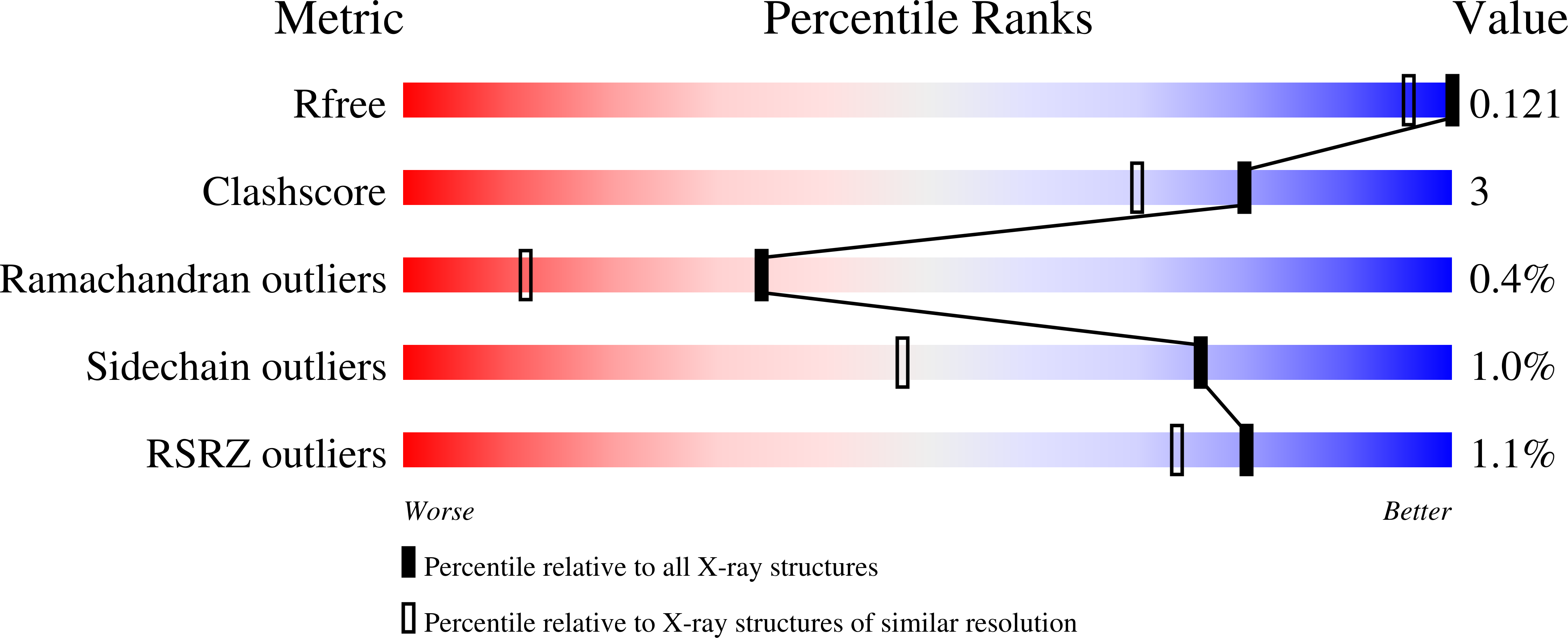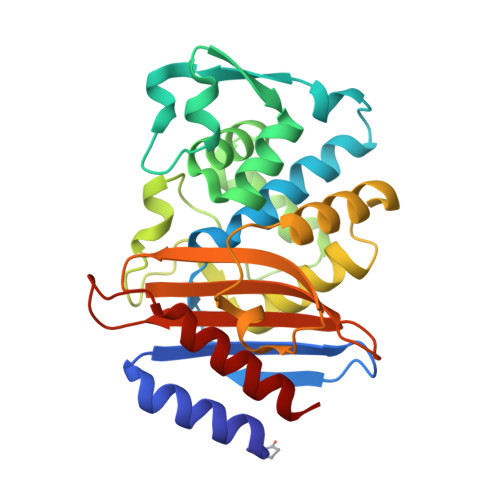Structural Basis and Binding Kinetics of Vaborbactam in Class A beta-Lactamase Inhibition.
Pemberton, O.A., Tsivkovski, R., Totrov, M., Lomovskaya, O., Chen, Y.(2020) Antimicrob Agents Chemother 64
- PubMed: 32778546
- DOI: https://doi.org/10.1128/AAC.00398-20
- Primary Citation of Related Structures:
6V7H, 6V7I - PubMed Abstract:
Class A ¦Â-lactamases are a major cause of ¦Â-lactam resistance in Gram-negative bacteria. The recently FDA-approved cyclic boronate vaborbactam is a reversible covalent inhibitor of class A ¦Â-lactamases, including CTX-M extended-spectrum ¦Â-lactamase and KPC carbapenemase, both frequently observed in the clinic. Intriguingly, vaborbactam displayed different binding kinetics and cell-based activity for these two enzymes, despite their similarity. A 1.0-? crystal structure of CTX-M-14 demonstrated that two catalytic residues, K73 and E166, are positively charged and neutral, respectively. Meanwhile, a 1.25-? crystal structure of KPC-2 revealed a more compact binding mode of vaborbactam versus CTX-M-14, as well as alternative conformations of W105. Together with kinetic analysis of W105 mutants, the structures demonstrate the influence of this residue and the unusual conformation of the ¦Â3 strand on the inactivation rate, as well as the stability of the reversible covalent bond with S70. Furthermore, studies of KPC-2 S130G mutant shed light on the different impacts of S130 in the binding of vaborbactam versus avibactam, another recently approved ¦Â-lactamase inhibitor. Taken together, these new data provide valuable insights into the inhibition mechanism of vaborbactam and future development of cyclic boronate inhibitors.
Organizational Affiliation:
Department of Molecular Medicine, University of South Florida Morsani College of Medicine, Tampa, Florida, USA.



















